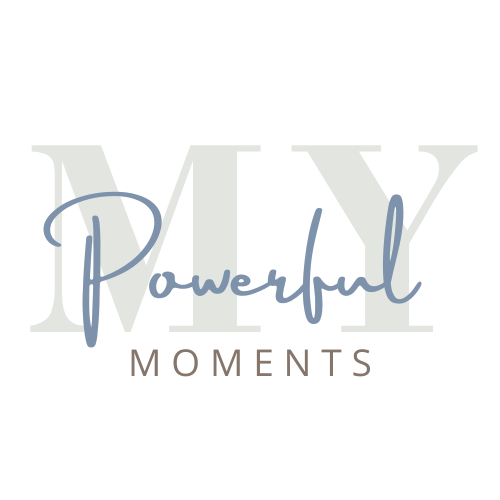Emotional alchemy is all about the skill of turning negativity into something useful and uplifting. Instead of ignoring or pushing away difficult feelings, I use those emotions as raw material for growth and self-understanding. Especially in today’s busy world, finding ways to work with my emotions means I get to enjoy greater peace and resilience. It goes beyond just managing feelings. Emotional alchemy helps me actively transform pain, frustration, or fear into powerful motivators for positive change. Over time, this skill lets me live more freely and connect more deeply—with both myself and others.

Understanding Emotional Energy
Every emotion comes with its own kind of energy. When I’m happy or excited, that energy feels light and open. When I experience anger, fear, sadness, or jealousy, I notice tension—maybe a tight chest, a flushed face, or my mind racing. These physical and mental effects show up because emotions are more than just thoughts. They directly impact my body and change the way I see the world in that moment.
Negative emotions like frustration or disappointment often lead to two common responses. Sometimes I repress them, keeping the feeling hidden or pretending it doesn’t exist. Other times, I express the feeling—letting it out through words or actions that might not always help the situation. The skill I focus on is transformation. Instead of bottling it up or letting it explode, I take the energy behind the emotion and give it a different outlet. This supports my growth and paves the way for healing and self discovery.
The Role of Awareness in Alchemy
Self awareness is truly the foundation for emotional transformation. When I notice and name what I’m feeling, it loses some of its grip on me. There are straightforward tools that boost my awareness. Expanding my emotional vocabulary helps me be more specific—like saying “I feel overwhelmed” instead of just “bad.” Journaling is another reliable support. If I write down my feelings at the end of each day, I often spot patterns or triggers that I missed in the moment. Mindfulness practices, like pausing to notice my breath, give me just enough space to get perspective before I react to strong emotions.
One key reminder is to avoid labeling emotions as “good” or “bad.” Every feeling offers a message or lesson, even when it’s uncomfortable. By accepting my full range of emotions, I’m more likely to find something useful in them and move toward self growth.
The 5-Step Alchemical Process for Emotional Transformation
I use a simple process when I want to work through strong emotions and switch up my mindset:
- Acknowledge: I give myself permission to fully feel the emotion, without trying to resist or ignore it. Sometimes I close my eyes and say, “Right now, I feel angry.”
- Accept: I remind myself that what I’m feeling is valid. Even uncomfortable feelings are part of being human, and there’s nothing wrong with having them.
- Analyze: I ask myself questions like “What set this off?” or “Is there a need that isn’t getting met?” Figuring out the trigger is my first step toward responding instead of reacting automatically.
- Reframe: I look for another way to interpret the emotion. For example, anxiety can be a sign that I care about something, and anger might mean I want better boundaries. By shifting my perspective, I spot possibilities instead of seeing only problems.
- Redirect: I choose to steer the emotional energy into something positive. Maybe I go for a walk, paint, talk to a friend, or work on a project. The point is to use the energy in a constructive way and find something positive in the effort.
This process isn’t always easy, but with practice it becomes more natural. By sticking with these steps, I build more flexibility and insight into my emotional life.
Practical Tools and Techniques
Certain tools make a huge difference when I’m working to turn emotional pain into energy that supports growth. Here are some of my most reliable techniques:
- Breathwork and Grounding Techniques: When emotion hits hard, I slow my breathing and focus on feeling my feet on the ground. A simple exercise: inhale for a count of four, hold for four, exhale for four. This helps settle my nervous system and tone down the intensity of the feeling.
- Journaling Prompts: If I feel stuck, I write responses to prompts like “Right now, I feel…” or “This emotion is trying to tell me…” Putting thoughts down on paper helps organize them and brings insight I might otherwise miss.
- Visualization and Guided Meditation: Sometimes I picture my emotion as a shape or color, and then watch it shift or dissolve as I breathe. Guided meditations focused on emotional healing have helped when a mood won’t budge on its own.
- Creative Expression: Channeling emotion into art, music, or writing pulls me into the energy behind the feeling. Doodling, listening to music, or freewriting lets me express what I can’t put into words.
- Physical Movement: Emotions tend to live in the body. When I move—even if it’s just dancing around my living room or going for a short walk—I break up tension and switch up my emotional state. Sometimes a quick stretch or a change of scenery is all that’s needed to lift my mood and clear my head.
Experimenting with different approaches helps me figure out what works best for me, and keeps my toolkit fresh when emotions show up in unexpected ways.
Real-Life Examples of Emotional Alchemy
I’ve watched friends, loved ones, and public figures take emotional pain and set it free as fuel for positive change. For example, a neighbor transformed the grief after losing a loved one into deep empathy, spending time volunteering at a hospice and offering support to others facing loss. Another friend took frustration with social injustice and turned it into persistent advocacy—channeling anger into compassion and action.
One case that especially inspires me is someone I know who faced childhood bullying. Rather than staying trapped in old wounds, they dreamt up a community group to help kids feel valued and heard. The group’s positive impact shows how emotional alchemy can create ripples of meaningful change throughout a community.
Common Pitfalls and How to Avoid Them
Sometimes, it’s tempting to look for shortcuts. One big example is toxic positivity, where I force myself to “be positive” and ignore real pain. This usually leaves me feeling disconnected from myself. Another trap involves rumination—replaying the same negative thoughts endlessly. When I notice this, I switch up my focus by tapping into grounding exercises or redirecting my energy.
It’s also easy to fall into overthinking. I might analyze emotions so much that I stop actually experiencing them. Keeping balance between insight and real feeling is key. Finally, spiritual bypass happens when I use uplifting ideas as a way to avoid the tough work that comes with feeling. The most powerful transformation happens when I meet hard emotions headon, without sidestepping discomfort.
Frequently Asked Questions
Here are questions I often hear about emotional alchemy:
Question: What if I can’t identify what I’m feeling?
Answer: Start small. Try basic emotion words and work your way up as you get more comfortable. Journaling or using an emotion wheel can help you get a better sense of your inner experience.
Question: How long does it take to transform a negative emotion?
Answer: There isn’t a set timeline. Some emotions pass quickly, while others ask for your attention over many days, weeks, or even longer. What matters most is staying with the practice and not judging how fast you’re moving forward.
Question: Are there risks in exploring strong emotions?
Answer: Sometimes, strong feelings can feel like too much. If you find yourself stuck or feeling worse, it helps to reach out for support from a trusted friend or counselor. Taking breaks and caring for yourself along the way is always important.
Practicing Emotional Alchemy Every Day
I see emotional alchemy as a life skill that grows with practice. The more I work with my emotions, the easier it becomes to spot chances for growth even in tough moments. Every challenge or moment of pain is an opportunity to learn about myself and move forward with real purpose. When I make good use of my pain, I find that insight, strength, and deeper connections are waiting on the other side. Learning to work with my emotions—rather than against them—unlocks hidden power and resilience in day today life. It’s a process worth repeating, every single day.
Raya Griggs – Feel It To Free It
